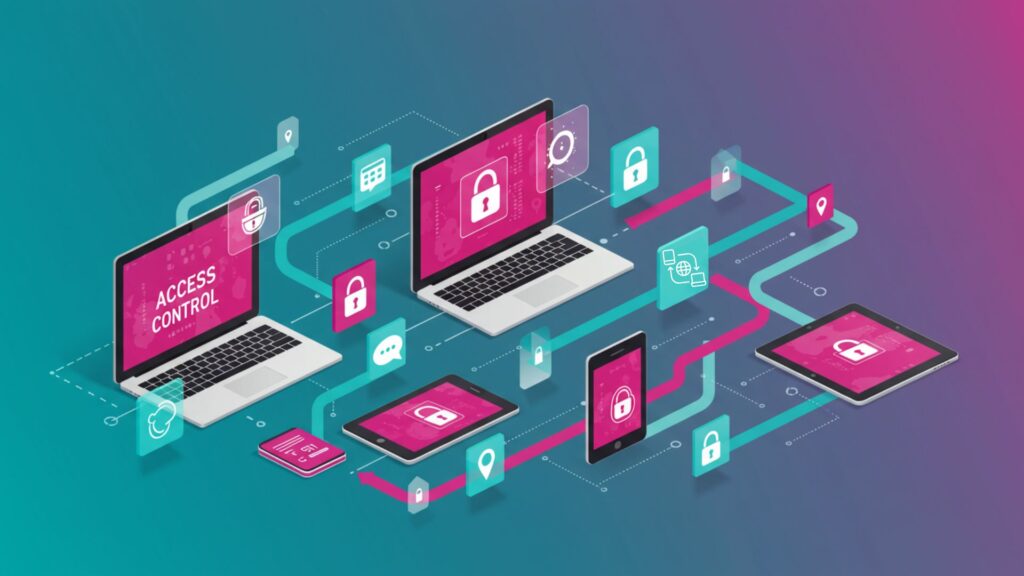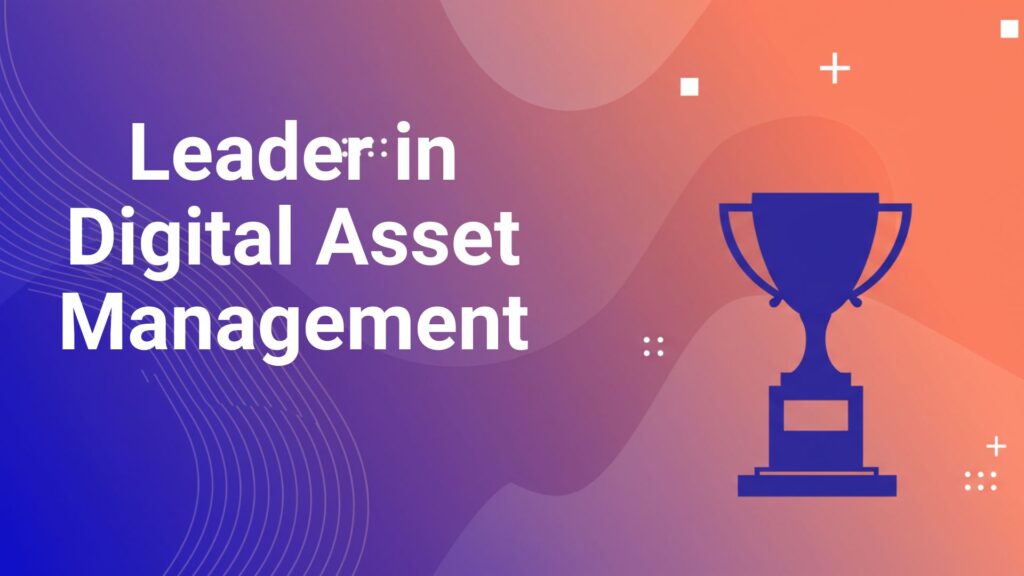Digital rights management has evolved from basic content protection to comprehensive compliance enablement for modern organizations.
- DRM technologies now integrate seamlessly with digital asset management platforms to provide enterprise-grade security and regulatory compliance.
- Healthcare, financial services, and pharmaceutical industries rely on advanced DRM solutions to meet strict regulatory requirements while maintaining operational efficiency.
- Modern AI-powered DRM systems offer automated threat detection, intelligent access controls, and real-time compliance monitoring.
The best digital asset management tools combine robust DRM capabilities with workflow automation to protect content without hindering productivity.
What started as a way to prevent movie piracy has become the backbone of how organizations protect sensitive information, maintain regulatory compliance, and enable secure collaboration across global teams. Digital rights management market growth has accelerated, with the industry expected to reach $14.16 billion by 2032, driven by compliance requirements and the need for secure asset storage.
Organizations handle everything from patient records and financial data to proprietary research and marketing materials. The challenge is ensuring authorized users can access what they need while maintaining complete audit trails for regulatory bodies. Digital asset management platforms have become essential, offering integrated DRM capabilities that protect content without creating barriers to legitimate business use.
Understanding digital rights management (DRM) means looking beyond traditional content protection to see how it facilitates business operations, supports compliance initiatives, and integrates with the tools teams already use. Whether you’re evaluating solutions for a growing organization or looking to enhance your current security posture, this guide will help you navigate modern DRM tools and understand how they connect to broader content management.
Why Is Digital Rights Management Important?
Digital rights management refers to technologies and processes that control how digital content is accessed, used, and distributed. While the concept originated in entertainment to prevent piracy, modern DRM has expanded to become a critical component of enterprise security and compliance strategies.
Think of DRM as a sophisticated lock-and-key system for your digital assets. When you create or upload content, DRM encrypts it and attaches specific rules about who can access it, what they can do with it, and for how long. Unlike basic password protection, DRM travels with the content, maintaining these restrictions even after files are shared or downloaded.
The global shift toward remote work and digital collaboration has made DRM essential. Organizations need to maintain security while enabling teams to work efficiently from anywhere. Modern DRM solutions provide granular controls that can adapt to different use cases, allowing a marketing team member to view and share approved assets while preventing them from editing or downloading master files.
How DRM Works in Modern Organizations
DRM systems operate through several integrated components. Encryption forms the foundation, converting content into unreadable code that requires specific digital keys to unlock. These keys are tied to user licenses that define exactly what someone can do with the content.
Access controls add another layer by verifying user identities and checking permissions before granting access. Modern systems can evaluate multiple factors simultaneously, such as the user’s role, the device they’re using, their location, and even the time of day. For example, a financial services firm might allow account managers to access client presentations during business hours from approved devices while blocking access from personal smartphones or after-hours requests.
Authentication happens continuously, not just at login. Advanced DRM systems monitor user behavior and can detect unusual patterns that might indicate unauthorized access or account compromise. If someone suddenly starts downloading large volumes of sensitive documents, the system can flag this activity and temporarily restrict access while security teams investigate.

The key advantage of DRM digital rights is maintaining protection without disrupting normal workflows. Users interact with protected content just as they would with any other file, viewing documents, collaborating on projects, and sharing materials, all while comprehensive security measures operate invisibly in the background.
How Does Digital Rights Management Support Different Industries?
Different industries face unique challenges when it comes to content protection and regulatory compliance. Seeing how others utilize DRM tools helps organizations choose solutions that address their particular needs while supporting broader business objectives.
Healthcare and Life Sciences
Healthcare organizations manage some of the most sensitive data in any industry. Patient records, research data, clinical trial information, and medical imaging all require strict access controls while remaining readily available to authorized medical professionals.
Modern healthcare DRM systems automatically classify content based on sensitivity levels and patient privacy requirements. A radiologist can instantly access imaging files for diagnosis while the system prevents unauthorized downloads or sharing outside the medical team. Research organizations use DRM to protect proprietary drug development data while enabling secure collaboration with external partners and regulatory bodies.

HIPAA compliance requirements demand detailed audit trails showing exactly who accessed patient information, when, and what they did with it. Advanced DRM platforms automatically maintain these logs, reducing compliance overhead while ensuring organizations can quickly respond to audit requests or security incidents.
Financial Services and Banking
Financial institutions handle customer data, trading algorithms, compliance reports, and strategic business information that requires multiple layers of protection. DRM systems in this sector must balance stringent security requirements with the need for rapid information sharing during time-sensitive transactions or regulatory reporting.
Banks use DRM to protect customer financial data while enabling loan officers to access necessary information for credit decisions. Trading firms apply content protection to proprietary research and market analysis, ensuring competitive advantages remain secure while analysts can collaborate effectively on investment strategies.
Regulatory compliance in financial services involves multiple frameworks, including SOX, GLBA, and various international banking regulations. DRM platforms automatically enforce data retention policies, maintain segregation between different types of financial data, and provide the detailed reporting capabilities regulators require during examinations.
Manufacturing and Technology
Companies in manufacturing and technology sectors protect intellectual property, including product designs, manufacturing processes, and proprietary research. DRM enables secure collaboration with suppliers, contractors, and international teams while maintaining strict controls over sensitive technical information.
Engineering teams can share CAD files and technical specifications with manufacturing partners while preventing unauthorized copying or distribution to competitors. Research and development departments use DRM to protect early-stage product concepts while enabling cross-functional collaboration on development timelines and market strategies.
Patent protection becomes more manageable with DRM systems that can track how intellectual property is accessed and used throughout the development process. This documentation proves valuable when establishing patent priority dates or defending against intellectual property disputes.
What Are the Best Digital Asset Management Tools with DRM Integration?
Organizations evaluating content protection solutions look for platforms that combine robust DRM capabilities with comprehensive digital asset management functionality. Integration addresses security requirements while improving operational efficiency and user experience.
Enterprise DAM Platforms with Built-in DRM
Modern enterprise DAM platforms are intelligent guardians of digital content. Today’s systems integrate DRM digital rights directly into the asset workflow, ensuring that security and creativity work hand in hand.
Rather than relying on disconnected tools or manual permissions, advanced DAM solutions automatically recognize usage rights and apply the right level of protection across teams and channels. Marketers, creatives, and partners can collaborate freely while keeping sensitive assets secure and on-brand.
AI and automation now play a larger role as well, helping systems detect potential risks, manage expirations, and enforce rights policies in real time. The result is a smoother, safer content ecosystem where teams can focus on producing impactful work instead of policing access controls.
Compliance-Focused DAM Solutions
Some digital asset management platforms specialize in serving highly regulated industries where compliance requirements drive technology decisions. These solutions integrate DRM capabilities with industry-specific workflow and reporting features. A DAM for compliance brings together digital rights management, automated governance, and audit-ready visibility to support industries with strict regulatory oversight.
Compliance-focused platforms often include automated classification systems that identify content requiring special handling based on regulations. Healthcare-focused DAM solutions automatically flag content containing patient information and apply HIPAA-compliant access controls.
Financial services DAM platforms integrate with existing compliance systems, automatically enforcing data retention policies and maintaining detailed audit trails. These systems can identify content subject to regulatory holds and prevent deletion or modification during investigation periods.
Pharmaceutical organizations benefit from DAM platforms that understand MLR (Medical, Legal, Regulatory) approval processes. These systems automatically route promotional materials through required approval workflows while maintaining version control and compliance documentation.
Integration Capabilities and Ecosystem Compatibility
The best DAM platforms with DRM integration connect seamlessly with existing business tools and workflows. Interoperability ensures content protection doesn’t create friction in daily operations or require extensive user retraining.
Modern platforms offer APIs and pre-built integrations with popular business applications, including Microsoft Office, Google Workspace, Slack, and industry-specific tools. Marketing teams can access protected brand assets directly from within their design applications, while finance departments can securely share sensitive reports through familiar collaboration platforms.

Cloud-based DAM solutions are great for organizations with distributed teams or complex partnership structures. These platforms enable secure content sharing across organizational boundaries while maintaining granular control over access permissions and usage rights.
How Do You Choose Between DRM and Comprehensive DAM for Secure Asset Storage?
Organizations often struggle to determine whether they need standalone DRM solutions or comprehensive digital asset management platforms with integrated protection capabilities. Consider organizational size, industry requirements, and existing technology infrastructure.
When Standalone DRM Makes Sense
Standalone DRM solutions work well for organizations with specific content protection needs and existing asset management systems. Companies that primarily need to protect a particular type of content, such as training videos, technical documentation, or research reports, may find focused DRM tools more cost-effective than comprehensive platforms.
Small to medium-sized organizations with straightforward content protection requirements often benefit from standalone solutions that can be implemented quickly without extensive customization. These tools typically offer faster deployment and lower initial costs while providing robust protection for specific use cases.
Organizations with existing content management systems that meet their operational needs may prefer to add DRM capabilities through integration rather than replacing their entire infrastructure. They can maintain familiar workflows while enhancing security for sensitive content.
Advantages of Comprehensive DAM Platforms
Comprehensive digital asset management platforms with integrated DRM offer significant advantages for organizations managing large volumes of diverse content types. These solutions provide unified user experiences where content protection operates seamlessly within broader asset management workflows.
Enterprise organizations benefit from platforms that combine asset organization, workflow automation, brand management, and security controls in a single system. Marketing teams can manage brand assets, creative teams can collaborate on projects, and legal departments can enforce compliance requirements within the same platform.
Cost considerations often favor comprehensive platforms for larger organizations. While initial implementation costs may be higher, the total cost of ownership typically decreases as organizations avoid the complexity and expense of integrating multiple separate systems.
Hybrid Approaches for Maximum Flexibility
Some organizations implement hybrid approaches that combine comprehensive DAM platforms for most content with specialized DRM solutions for secure asset storage. This strategy allows them to optimize both operational efficiency and security protection based on specific content requirements.
Financial services firms might use a comprehensive DAM platform for marketing materials and general business documents while implementing specialized DRM for trading algorithms and client financial data. Healthcare organizations could manage general marketing and educational content through DAM while using medical-grade DRM for patient records and research data.
Hybrid approaches require careful planning to ensure seamless user experiences and avoid creating security gaps between different systems. However, they offer maximum flexibility for organizations with diverse content protection requirements and complex regulatory environments.
What Are the Latest Trends in Digital Rights Management?
DRM is driven by advances in artificial intelligence, changing work patterns, and evolving security threats. Understanding these trends helps organizations make informed decisions about their content protection strategies.

AI-Powered Threat Detection and Response
Artificial intelligence changes how DRM systems identify and respond to security threats. Modern AI algorithms can analyze user behavior patterns and detect anomalies that might indicate unauthorized access attempts or compromised accounts.
Machine learning systems continuously improve their ability to distinguish between legitimate and suspicious activities. They can identify when a user suddenly starts accessing content outside their normal scope, downloads unusually large volumes of files, or exhibits behavior patterns consistent with data theft attempts.
Automated response capabilities allow DRM systems to take immediate action when threats are detected. Systems can temporarily suspend access, require additional authentication, or alert security teams while preserving detailed logs for investigation. Rapid response reduces the window of opportunity for malicious actors.
Enhanced Mobile and Remote Access Controls
The shift toward remote and hybrid work has driven innovations in mobile DRM capabilities. Modern solutions must provide robust security while enabling productivity on smartphones, tablets, and personal devices.
Context-aware access controls evaluate multiple factors when determining whether to grant access to protected content. Systems can consider device security status, network connection type, user location, and time of access to make intelligent decisions about appropriate protection levels.
Containerization technologies allow organizations to create secure workspaces on mobile devices without compromising user privacy or device functionality. Employees can access protected business content within secure containers while maintaining full control over their personal applications and data.
Blockchain Integration for Immutable Audit Trails
Blockchain technology offers compelling advantages for organizations requiring tamper-proof audit trails and transparent content ownership verification. While still emerging, blockchain-based DRM solutions provide unprecedented transparency and accountability.
Immutable records created by blockchain systems ensure that access logs and usage data can’t be altered after creation. This capability is valuable for organizations in heavily regulated industries where audit trail integrity is required for compliance.
Smart contracts enable automated enforcement of complex licensing agreements and usage restrictions. Organizations can define specific terms for content use and have blockchain systems automatically enforce these terms without human intervention or oversight.
Frequently Asked Questions About Digital Rights Management
What’s the difference between DRM and basic password protection?
DRM provides more comprehensive protection than basic passwords. While passwords only control initial access to files, DRM maintains protection throughout the content lifecycle. DRM-protected files remain encrypted and controlled even after they’re downloaded, shared, or copied. Users might be able to view content but cannot print, edit, or redistribute it without proper authorization. Basic password protection, once bypassed, offers no ongoing control over how content is used.
How does DRM integration affect user productivity and workflow efficiency?
Modern DRM solutions operate transparently within existing workflows. When properly implemented, users interact with protected content just as they would with any other files. The key is choosing solutions that integrate with the tools teams already use. Well-designed DRM actually improves productivity by eliminating security-related delays and providing clear guidelines about what content can be used in different contexts.
Can DRM systems integrate with existing collaboration tools and business applications?
Yes, leading DRM platforms offer extensive integration capabilities with popular business applications. Many solutions provide APIs and pre-built connectors that enable integration without requiring extensive custom development. Cloud-based DRM platforms allow protected content to be accessed through familiar interfaces while maintaining comprehensive security controls.
What should organizations consider when evaluating DRM solutions for compliance requirements?
Organizations should first identify their specific regulatory requirements and ensure potential solutions can comprehensively address these needs. Key considerations include audit trail capabilities, user access controls, data retention policies, and reporting features required by relevant regulatory frameworks. Integration with existing compliance systems and the ability to automatically generate required reports can reduce ongoing compliance overhead.
Secure Your Digital Future with Integrated Content Protection
Digital rights management has become an essential component of modern business operations. Organizations that understand how to leverage DRM effectively, whether through standalone solutions or integrated digital asset management platforms, gain advantages in protecting their valuable content while enabling productive collaboration and maintaining regulatory compliance.Aprimo offers a comprehensive digital asset management platform that seamlessly integrates advanced DRM capabilities with intelligent content operations, ensuring your valuable assets remain secure while empowering your teams to work efficiently and compliantly. Discover how integrated content protection can transform your organization’s security while supporting your business objectives.


